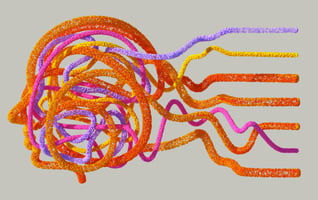Targeting Is Dead: Why Bidding Models Now Drive Meta Ad Success
There’s been a quiet, but extremely important, shift in digital advertising over the past few years—quiet, because it didn’t happen all at once, and quiet, because many advertisers haven’t fully caught on.
But here’s the truth:
Digital targeting—as we used to know it—is dead.
It’s not just disappearing. It’s already gone.
Especially on platforms like Meta Ads, the levers that used to give us control—detailed targeting, tight lookalikes, exclusion lists—are no longer where the performance comes from. If you’re still trying to win by micromanaging audience segments, you’re playing a game the algorithm stopped caring about years ago.
What’s Replacing Manual Targeting? Machine-Led Optimization
For years, success in digital marketing came from precision.
You could laser in on a buyer persona using stacked interest categories, layered demographics, behaviors, placements, and exclusions. You controlled exactly who saw your ad.
But it wasn’t just about control for control’s sake — it directly impacted cost.
This level of hyper-targeting allowed you to tap into small, underpriced corners of the auction. You could reach tiny pockets of high-intent users for almost no money. The supply/demand imbalance worked in your favor: limited competition, narrow delivery, high frequency, cheaper CPMs, and outsized results.
That era is gone.
Those levers have either been removed or made irrelevant by forced expansion and automated optimization.
Your Inputs Don’t Matter (Much). Your Outcomes Do.
If granular control is fading, what really matters?
Two things:
-
How well you align your objective and bidding model
-
What creative you pair with those objectives
Your campaign objective is now the primary steering wheel in ad delivery:
-
Choose “Conversions” → Meta hunts for buyers.
-
Choose “Leads” → it finds form-submitters.
-
Choose “Video Views” → it goes after watchers—not buyers.
But here’s what makes this tricky:
When you optimize for real outcomes like conversions, Meta quietly takes over targeting, often expanding far beyond your input settings. You don’t see it happening, but you feel it. The system adjusts delivery in real time based on signals you're not privy to.
This isn’t about casting a “wide net.”
It’s about opaque optimization — precision you can’t see, control, or tweak.
It’s a tough balancing act, and one Meta’s had to repeat many times. There’s a constant push and pull:
-
Users want privacy, less tracking, and cleaner feeds.
-
Advertisers want control, attribution, and ROI.
Meta’s real business is managing that tension.
And right now, the balance is tipping toward user-side demands. That means advertisers must adapt by focusing on inputs Meta does care about: conversion quality, objectives, and creative.
Meta’s Investment in AI: Billions of Proof
This isn’t speculative—it’s corporate strategy backed by real dollars.
💡 Capital Investment
-
Meta plans to spend $60–65 billion in CapEx in 2025, focused heavily on AI infrastructure like data centers, servers, and GPUs — a ~60% increase over 2024’s $38–40 billion
→ Constellation Research
→ TechCrunch -
It expects to have over 1.3 million GPUs online by year-end, equivalent to 1 GW of compute, power comparable to 750,000 homes
→ Technology Magazine
🤝 Human Capital
-
Meta has aggressively recruited AI talent with nine-figure compensation packages, including sign-on bonuses exceeding $100 million
→ Axios
→ Business Insider -
It invested $14.3 billion for a 49% stake in Scale AI, with CEO Alexandr Wang brought in to lead a new superintelligence lab
→ Maginative
This is the system you’re buying media on. You’re either dancing with it—or stepping on its toes.
The Future Is Bidding Model Alignment—and Stacking
Meta’s learning system is built around conversion feedback, not predefined personas. So what’s the modern lever?
🔁 Bidding Model Alignment
Use campaign objectives that match your business goal. The system doesn’t guess anymore—it executes exactly what you tell it to.
But don’t stop there.
📊 Bidding Model Stacking
Run the same creative across multiple objectives. For example:
-
A testimonial video could run as:
-
Conversions (optimize for purchases)
-
Leads (generate emails)
-
Video Views (boost watch rate)
-
Traffic (increase site visits)
-
Reach (maximize exposure)
-
Same asset. Different objectives. Different signals. And critically: different audience models.
Why it works: Meta is targeting not just based on inputs, but based on creative-level engagement. By stacking objectives with the same ad, you gather more diverse learning signals and build a multi-lane data feedback loop. This makes your best creative go further—and keeps learning compounding.
And here’s the kicker:
When you bid higher up the funnel (e.g. views or traffic instead of purchases), your CPMs can drop 70–90%, sometimes more. That’s because the system can find those events much more easily and cheaply. Of course, a “view” isn’t a purchase — but it’s still a signal. And now you’ve picked up a ton of extra engagement data, at a fraction of the cost, using the same creative asset.
This isn’t a 'hack' or loophole that could randomly close on you at any moment. It’s a new form of ad strategy architecture.
Phantom Targeting Still Matters (for Now)
Some basic filters — age, country, gender — can still help during early optimization phases, especially for newer ad accounts without much pixel data.
But the further you go, the less they matter. Why? Because Meta’s engine learns from people, not profile fields.
The real performance levers become:
-
Event quality (purchase vs add to cart vs page view)
-
Signal density (how many conversions per week)
-
Historical performance and feedback loops
In short: the system learns from results, not rules.
The Real Secret Sauce? Brand, Data, Who You Know—and Hustle
Here’s what’s winning in the new world:
-
Brand – Recognition, resonance, and clarity
-
Data – Quality CRM, clean events, matched conversions
-
Relationships – Access to tools, reps, creators, and insight
-
Bidding Model Stacking – One creative, multiple learning signals
But one more thing sets long-term winners apart:
Organic hustle.
Organic Isn’t Going Away—It’s Getting More Valuable
Even as AI saturates paid, organic content has anti-fragile value.
Why? Because no matter how good the tech gets, people tune out noise—and AI can’t fake true credibility.
Organic will continue to reward:
-
Authenticity
-
Actual expertise
-
Transparency
-
Resourcefulness
-
Consistent output
People can be manipulated short-term—but they will torch you back long-term. The industry has seen this over and over. It's not an opinion. It’s history.
Even if AI agents start handling the supply side, demand still comes from real people. And those people are exceptionally good at filtering B.S.
Final Takeaway: Less Control, More Leverage — Plus a Lot More Hustle
The instinct when you lose control is to try to get it back. But in digital advertising today, chasing control is a losing battle.
You’ll go further, faster, by shifting your mindset: from targeting users to guiding algorithms.
Yes, it can feel like giving up power. But it’s actually a different kind of power — one based on leverage, not micromanagement.
The advertisers who will win in the next phase of this ecosystem are the ones who:
✅ Choose their objectives strategically
✅ Pair great creative with stacked bidding models
✅ Feed the machine clean, outcome-focused data
✅ Hustle organically to build a brand people trust
✅ Let the algorithm do what it was built to do
That’s the game now. And it’s not a lesser version of the past—it’s a smarter one.
Get a free 20–30 minute strategic review of your Meta Ads account.
During the call, we’ll pinpoint quick wins, diagnose hidden misalignment, and outline the exact improvements that would make your system more predictable and profitable — whether that’s a few small optimizations or a larger rebuild.
Book your free review here.
-2.png?width=100&height=100&name=V%20(1)-2.png)
.jpeg?width=50&name=1723225351108%20(1).jpeg)


